The Perfect Type of Christmas Tree For Your Home
When do you put your Christmas tree up? Do you race out the day after Halloween to begin preparations for the festive period? Or do you follow an old family tradition, and put it up on Christmas Eve?
Believe it or not, decorated Christmas trees are a relatively recent addition to festive celebrations. They have only been an accepted part of Christmas tradition for the last 150 years or so. Hands up if you thought they had been around for longer?
I did, too!
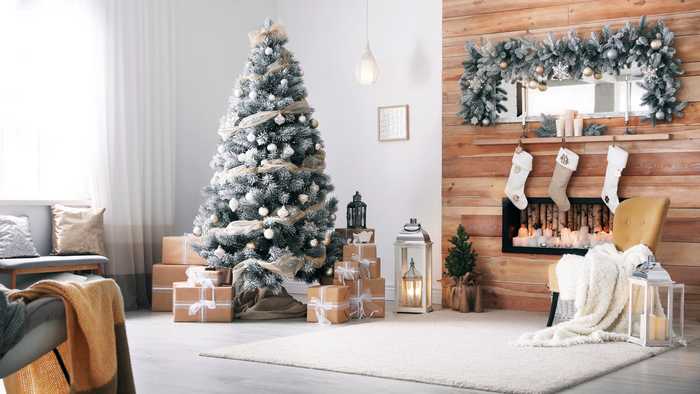
A brief history of the Christmas tree
For millennia, people used evergreens symbolically, believing they could keep witches, ghosts, evil spirits, and illness at bay. However, the narrative started to change around the 16th century in Germany.
Martin Luther – the Protestant reformer – added candles to his Christmas tree after being inspired by the stars twinkling in the night sky. Much like trends shared on social media, Luther’s idea for festive décor spread like wildfire.
By the early 19th century, the idea of a candlelit tree reached America. However, it received a somewhat frosty reception. But fast forward to the mid-20th century, and Queen Victoria and Prince Albert’s love of decorated, lit Christmas trees made them socially acceptable.
Since then, decoration styles have changed. We have strings of electric fairy lights, a selection of live and artificial trees in a variety of sizes, and ornaments to suit all styles and colour schemes.
But before you can start decorating, how do you pick the perfect type of Christmas tree for your home?
Here is my guide to the different Christmas trees available, their pros, and their cons:
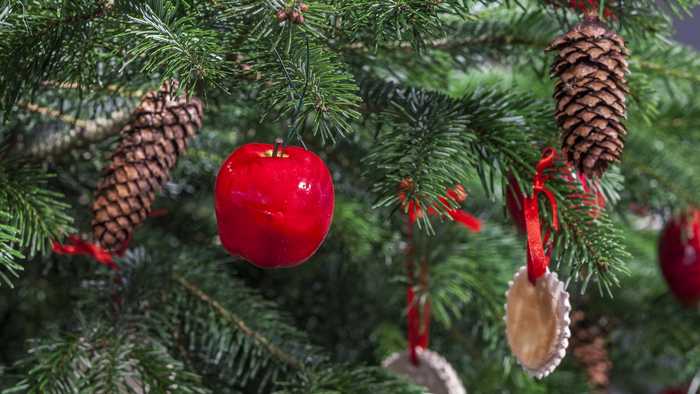
Real Christmas Trees
Commonly found across the UK are the Nordmann Fir, Norway Spruce, and the Douglas Fir. Occasionally you may find a Fraser Fir, though they tend to be grown on plantations in Scotland and distributed around the country. You’re unlikely to be able to visit a plantation to buy a Fraser Fir outside of Scotland. Rarely, you will find a Balsam Fir for sale around the Leicestershire region.
The Nordmann Fir is best known as a “non-drop” tree for its excellent needle retention, even when it has dried out.
The Norway Spruce and Douglas Fir have the best fragrance but are renowned for dropping their needles. If you are happy to hoover daily, however, the scent is worth the extra housework!
Favoured by the White House, the Fraser Fir combines excellent needle retention, fragrance, and a well-balanced, pyramid shape.
The Balsam Fir is the other all-American Christmas tree of choice. It is fragrant with dark green needles.
Pros:
- The real pine smell. Nothing screams ‘Christmas’ more than the smell of fresh pine. There really is nothing better.
- Recyclable or re-planting schemes. Real trees can be recycled into firewood or be crafted into wooden trinkets. There are even multiple replanting schemes cropping up around the country, through which you can replant your Christmas tree each year and re-use it the next year.
- Biodegradable. Like all organic matter, real trees are biodegradable and so are better for the environment.
Cons:
- Costly. It can be expensive to buy a new tree each year.
- Time investment. Real trees require watering and keeping in relatively specific temperature conditions.
- Mold, fungi, and bugs. Like any other plant, occasionally you find Christmas trees filled with mold, fungi, or bugs. This can be quite an unpleasant surprise! Reduce the risk by purchasing your tree from a reputable Christmas tree farm.
- Fire risk. If not watered frequently enough, your live tree is at risk of drying out and posing a fire hazard.
- Hyper-allergenic. Unfortunately, real trees are not suitable for those with allergies to tree pollen.
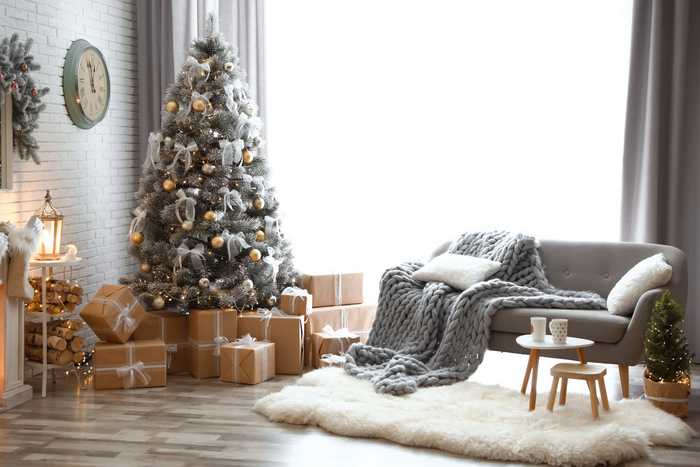
Traditional Artificial Trees
Artificial trees came into existence in Germany in the late 1800s when deforestation became a real problem. The first one was made of goose feathers. The feathers were split, dyed green, and tethered to wire to form branches. Since then, artificial trees have been crafted from the same materials as toilet brushes, aluminium, and finally PVC.
Pros:
- Affordable. Even the more expensive models available work out cheaper in the long run.
- Reusable. You can re-use the same tree year after year if you look after it. This means that – theoretically, artificial trees could be environmentally friendly. Especially if your artificial tree is made from eco-friendly or recycled materials.
- Symmetrical. For those who like a clean-cut and groomed aesthetic, artificial trees offer the satisfaction of symmetry.
- Variety of styles and sizes. From miniature trees to those that could fill a space several stories high, artificial trees come in a variety of styles and colours, including those peppered with faux snow.
- Lights and decorations sometimes included. If you love a good-looking Christmas tree, but don’t get a kick out of the decorating itself, you can opt for a pre-decorated tree.
- Most trees are made flame retardant. For peace of mind, artificial trees are less likely to cause house fires.
- Hypo-allergenic. Artificial trees do not trigger allergies.
Cons:
- Trends change. Interior design fashions come and go. While your artificial tree seems like a good deal to begin with, you may end up spending more money keeping up with the Joneses.
- Not conventionally made of environmentally friendly materials. Most artificial trees are made from PVC and chemicals which are toxic to people and the environment; they’re certainly not biodegradable.
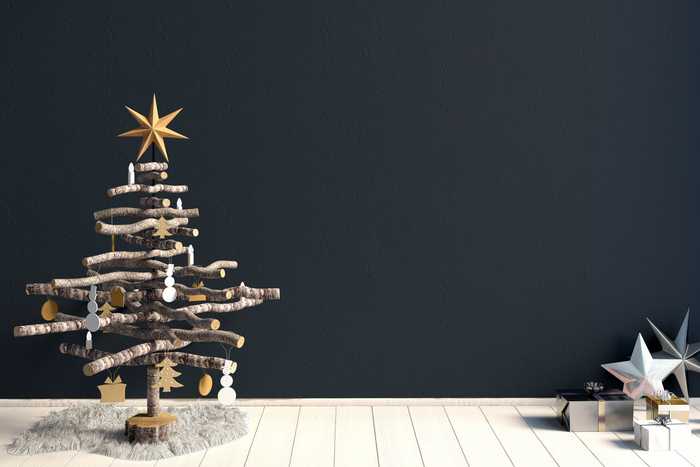
Alternative Christmas Trees
Traditions are made to be broken. From space-saving, wall-mounted trees, to strings of lights and trees constructed solely of baubles, there is something for everyone if you just look hard enough. Can’t find the perfect tree for you? Get creative!
Pros:
- Offers most of the benefits and convenience of a traditional artificial tree.
- Novel and eye-catching designs. If you like to stand out from the crowd, an alternative Christmas tree might be for you. Whether you like the simplicity of a minimalist, wooden tree, or the kitsch stylings of a ceramic tree for your mantelpiece, there are options available.
Cons:
- Difficult to source. Being non-mainstream products, alternative trees can be difficult to come by.
- Limited variety.
- Affordability. Usually, you pay higher prices for novelty. One keen example is the Thomas Kinkade Ceramic Christmas Tree; while undeniably stunning, the price tag is hefty.
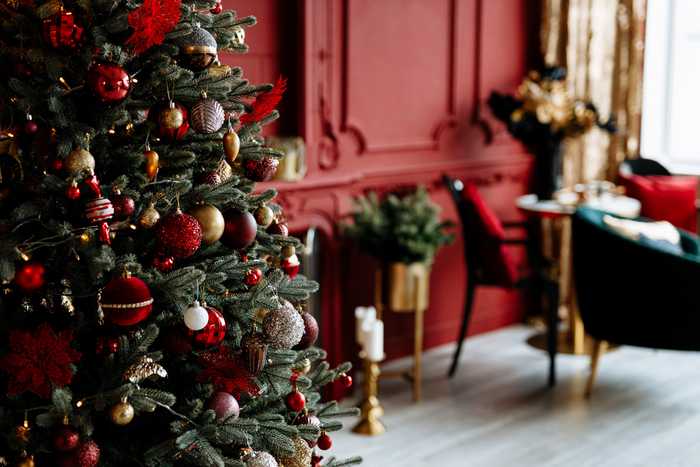
How Tall Is The Perfect Christmas Tree?
Not sure what size tree to buy for your home? The hard and fast rule is:
If you plan to use a topper, leave at least 12 inches / 30 centimetres leeway between the top of the tree and your ceiling.
If you don’t plan on using a topper, you can get away with leaving a minimum of 6 inches / 15 centimetres leeway between the top of the tree and your ceiling.
Much like choosing the perfect tree this Christmas, a home renovation project can take lots of careful planning. If you’d like to get in touch with the team here at Maidenhead, to discuss any upcoming ventures, please drop us a line!
Posted by Wouter De Jager on November 19th 2021

